Some of the rarest types of bugs in the world are pink bugs. Some of them are found in North America while many others are found in Europe, Asia, Africa, and Australia.
Bugs may be pink throughout their lifespan, as in the case of ladybeetles, or pink for a short period, such as in the case of some caterpillars.
The pink nuances seen on bugs vary considerably as well.
From bright pink to pink-purple nuances, bugs can come in different colors and color combinations.
Some rare morphs of pink bugs may be seen in diverse habitats from suburban areas to hardwood woodlands.
Here are some of the most common pink bugs around the world which may be either diurnal or nocturnal.
Table of Contents
1. Painted Meadow Grasshopper
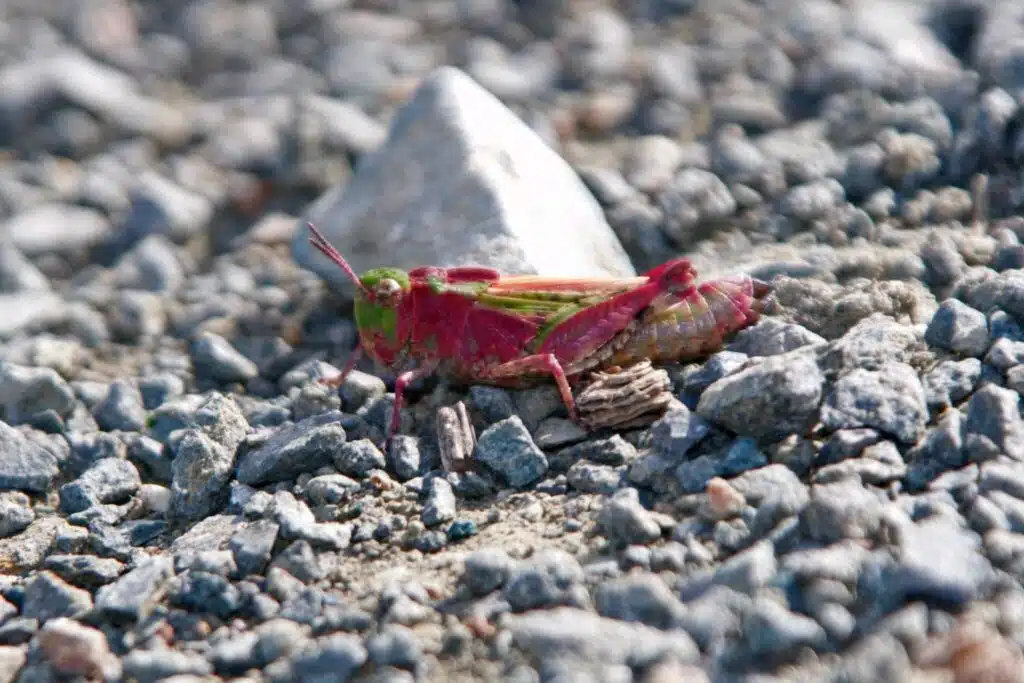
Scientific name: Chimarocephala pacifica
Shades of pink: Pink-purple
Painted Meadow Grasshoppers come in unique pink and green color combinations. This look is specific to females, which are both larger than males and they can fly which males lack.
Some pink shade differences are specific to the females in Northern California compared to those in Southern parts of the state plus Baja California. The female Painted Meadow Grasshopper in Baja California can fly.
Most of these colorful pink bugs aren’t easily seen as these females hide in tall grass compared to males who may also be spotted out in the open.
2. Meadow Grasshopper
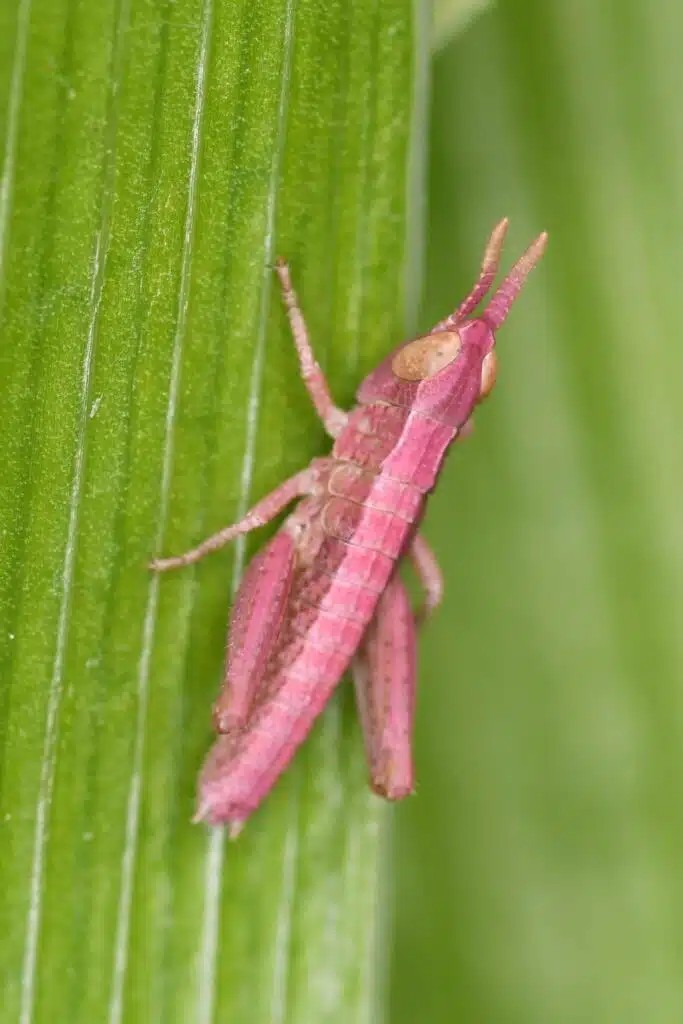
Scientific name: Pseudochorthippus parallelus
Shades of pink: Purple-pink
A rare morph of the Meadow Grasshopper, its pink variant stands out. A vivid pink color with purple undertones is characteristic of this morph of a Meadow Grasshopper which is green most times.
This species tends to grow to a maximum length of 0.7 inches with females being larger than males. While often larger and more colorful, females cannot fly as Meadow Grasshoppers, in general, cannot fly.
These types of grasshoppers are further known to be quite static. Their inability to fly often limits them to a very small habitat.
3. Oblong-winged Katydid
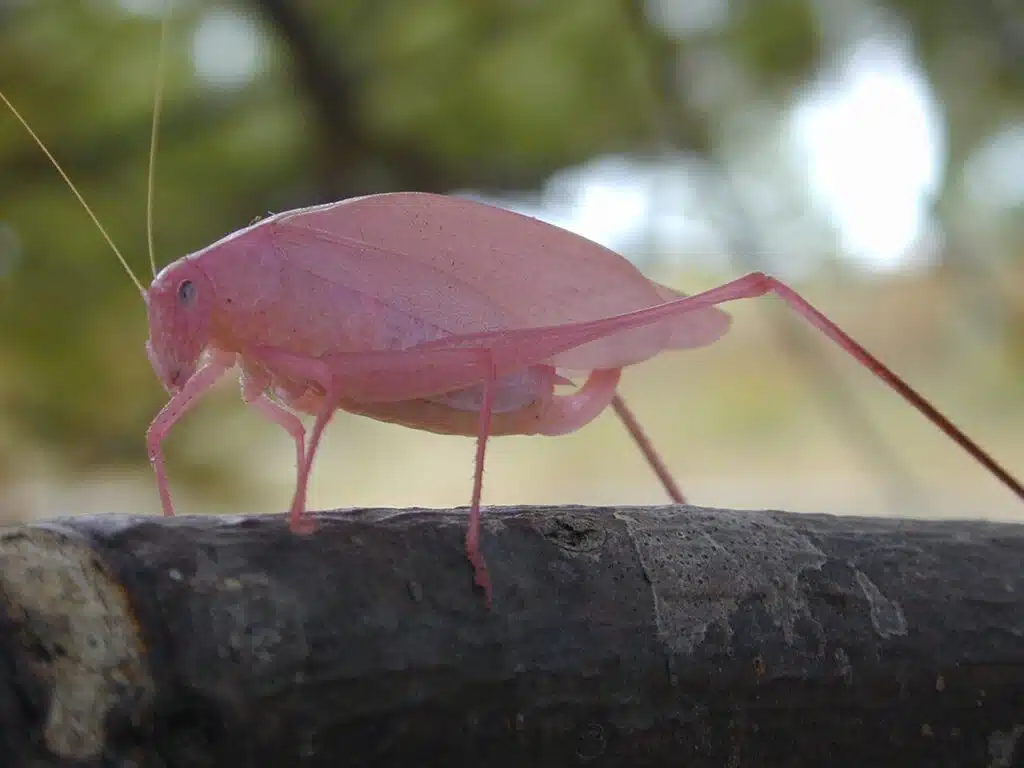
Scientific name: Amblycorypha oblongifolia
Shades of pink: Pink-magenta
High color variability is specific to The Oblong-winged Kadydid. This is a species often seen in vivid pink coloring, alongside green and yellow coloring. In rare cases, these false katydids can also be orange.
An Eastern US distribution (except Florida) is specific to these types of bugs.
It is believed the pink color of the species is inherited and not a result of a camouflaging trait. These types of bugs may be found in deciduous woodlands and also in gardens, attracted to high moisture levels.
They tend not to be destructive of flowers and legumes in gardens.
4. Australian Common Garden Katydid
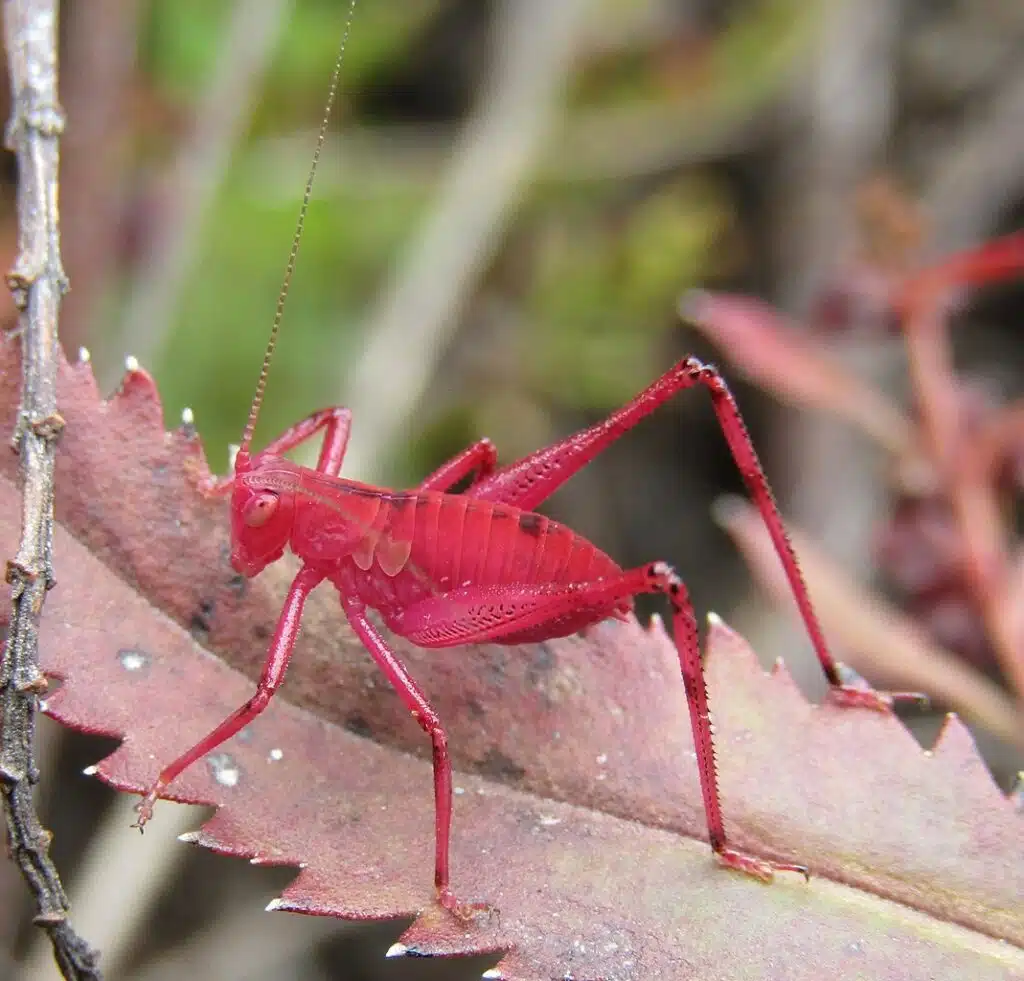
Scientific name: Caedicia simplex
Shades of pink: Rose pink
Australian Common Garden Katydids can sometimes be pink. These are some of the largest bugs in Australia’s urban areas.
Commonly found in gardens, as its name suggests, the bug grows to a size between 1.5 and 2.3 inches with its nymphs often being pink.
While smaller than adults, its nymphs often take on the color they are feeding on. This can be a rose which is why they can often appear pink.
Once they become adults, Australian Common Garden Katydids are mostly pink, without any camouflaging color change abilities.
5. California Pink Glowworm
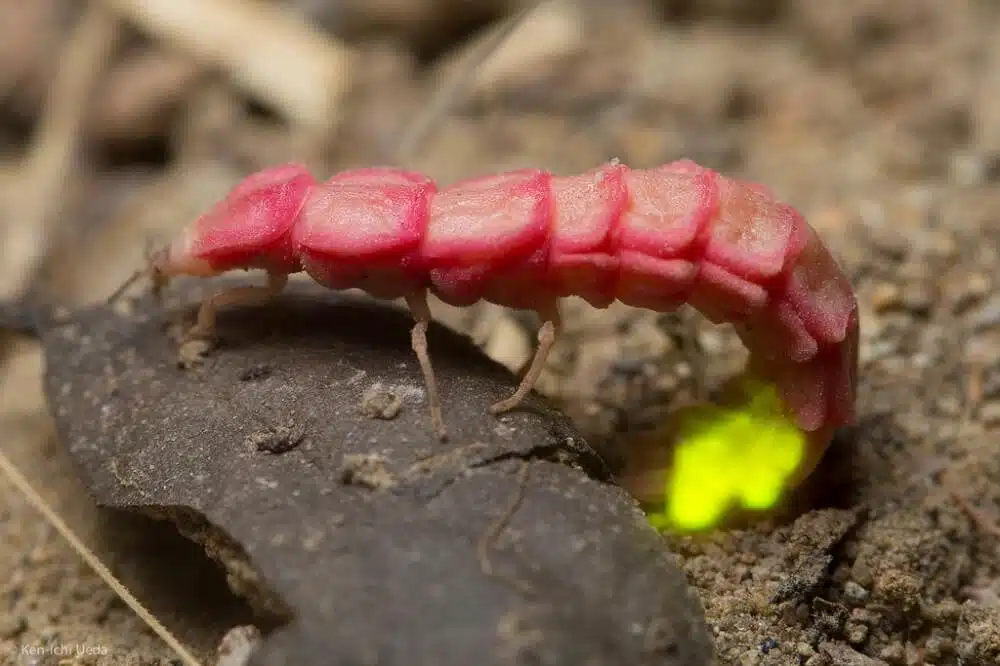
Scientific name: Microphotus angustus
Shades of pink: Faded pink
Southern California and Baja California are home to one of the unique species of pink bugs in North America, The California Pink Glowworm.
This is a species mostly characterized by its faint ability to glow, a trait that is specific to the male, which grows into a beetle.
The female of the species always remains a glowworm, living a short life in which it has to attract males. A shortlived species, the pink female has an elongated worm-like body with pink nuances which get darker from one day to another.
6. Spotted Pink Ladybeetle
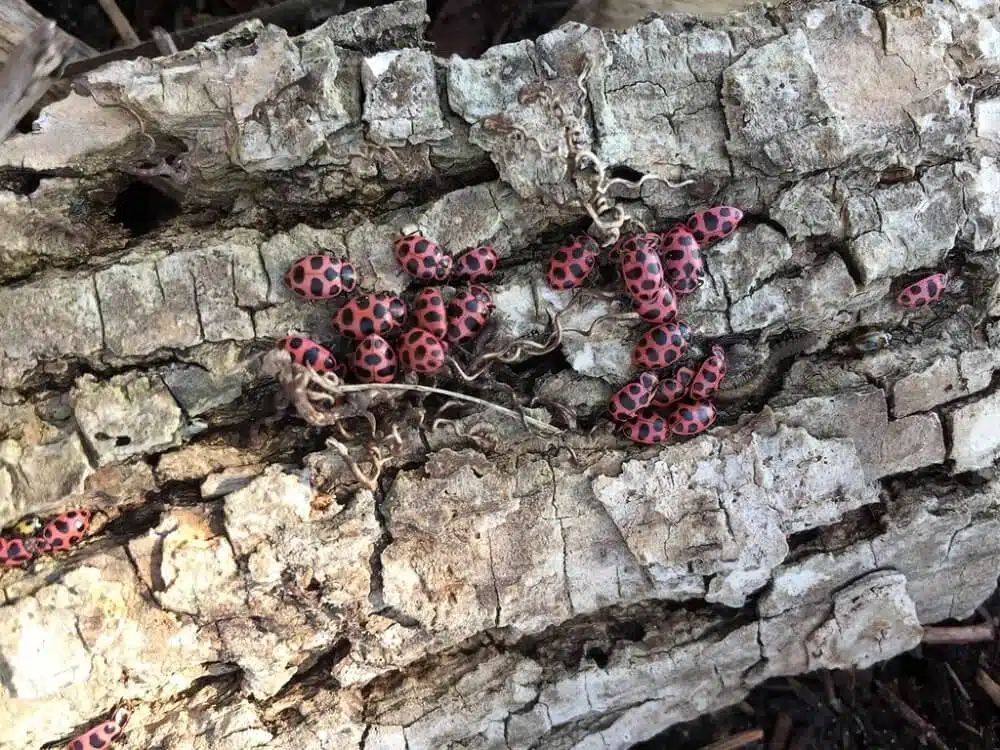
Scientific name: Coleomegilla maculate
Shades of pink: Bright pink
The mostly pink base color is specific to The Spotted Pink Ladybeetle, a species that numbers 6 black spots.
This type of ladybeetle is rarely seen in red or brown color.
In its larvae stage, The Spotted Pink Ladybeetle is mostly brown or black as it doesn’t resemble the adult.
Crops are ideal places for these colorful ladybugs as they are predators. They eat some of the pest bugs on alfalfa, cotton, and other types of crops.
The Spotted Pink Ladybeetle is a North American native species, with a growing presence around the world.
7. Poplar Ladybird Beetle
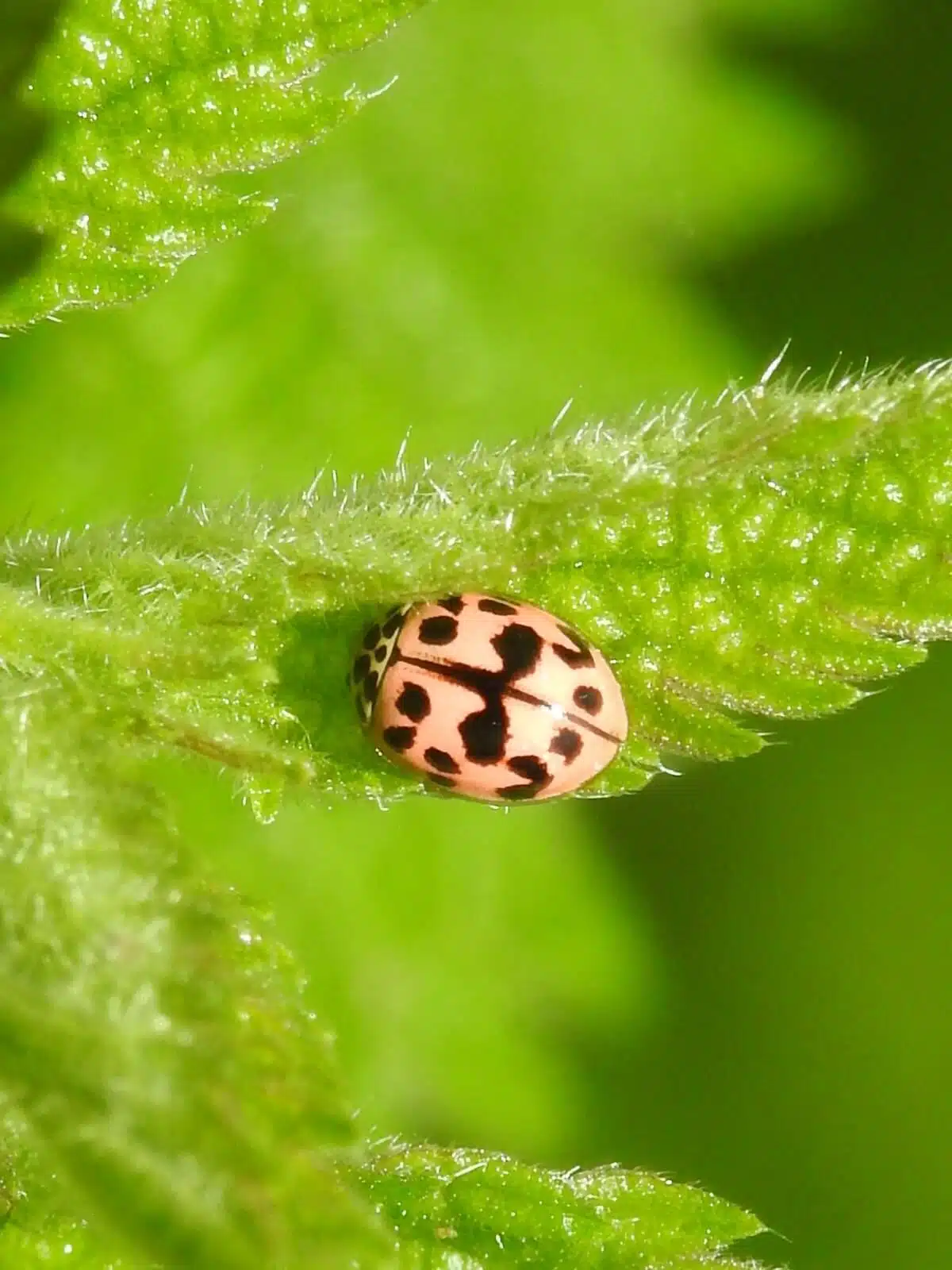
Scientific name: Oenopia conglobate
Shades of pink: bright pink
Poplar Ladybird Beetles are some of the smallest types of pink bugs. The species grows to a size between 0.10 and 0.19 inches.
A faded pink base color is specific to the elytra of the bug. 8 individual or fused black spots contrast its bright color.
While small, this type of ladybeetle is a predator. It feeds on small aphids and their eggs, scattered around various crops.
The small size of the species allows it to hide and overwinter in small sheltered places. They retreat under tree bark for the cold months of the year.
8. Frog-legged Leaf Beetle
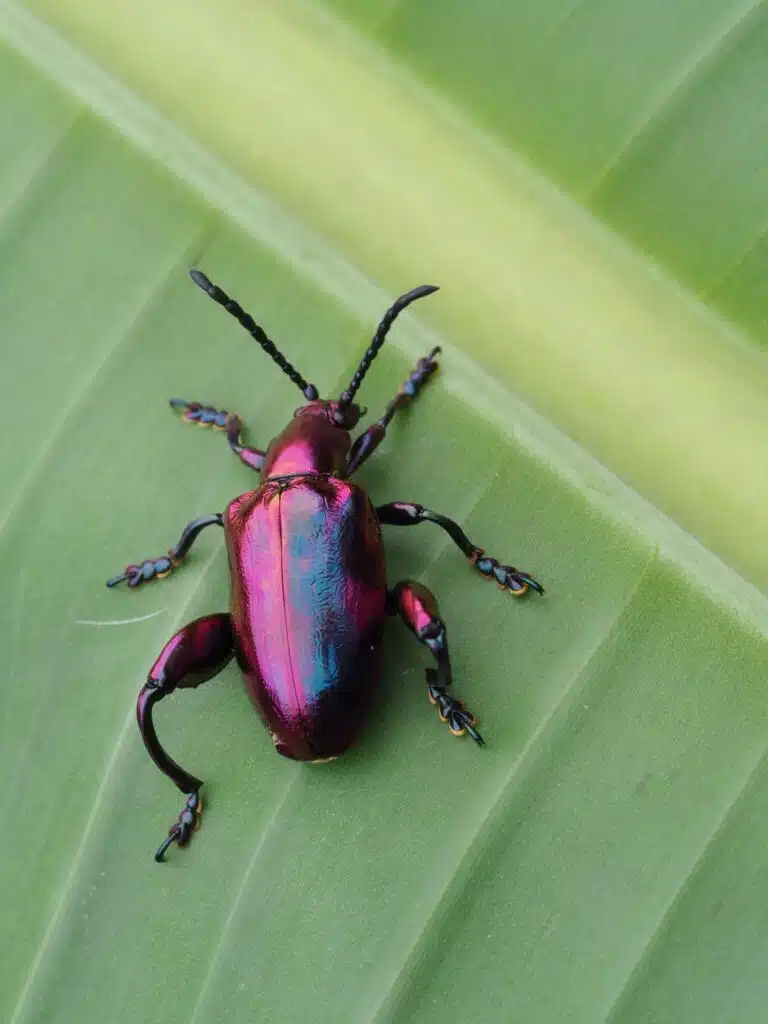
Scientific name: Sagra femorata
Shades of pink: Metallic pink
Frog-legged Leaf Beetles are a colorful species named after the strong hind legs of the male. Considerably larger than the rest of its legs, these legs look similar to those of frogs.
Females have smaller hind legs but they also share the same color variability as males.
They can be spotted in a dark metallic pink color.
Alternative colors for The Frog-legged Leaf Beetle include metallic blue, brown, and green. Color combinations are also possible, but also with a general metallic hue.
This species can be found in Southeast Asia.
9. Orchid Mantis
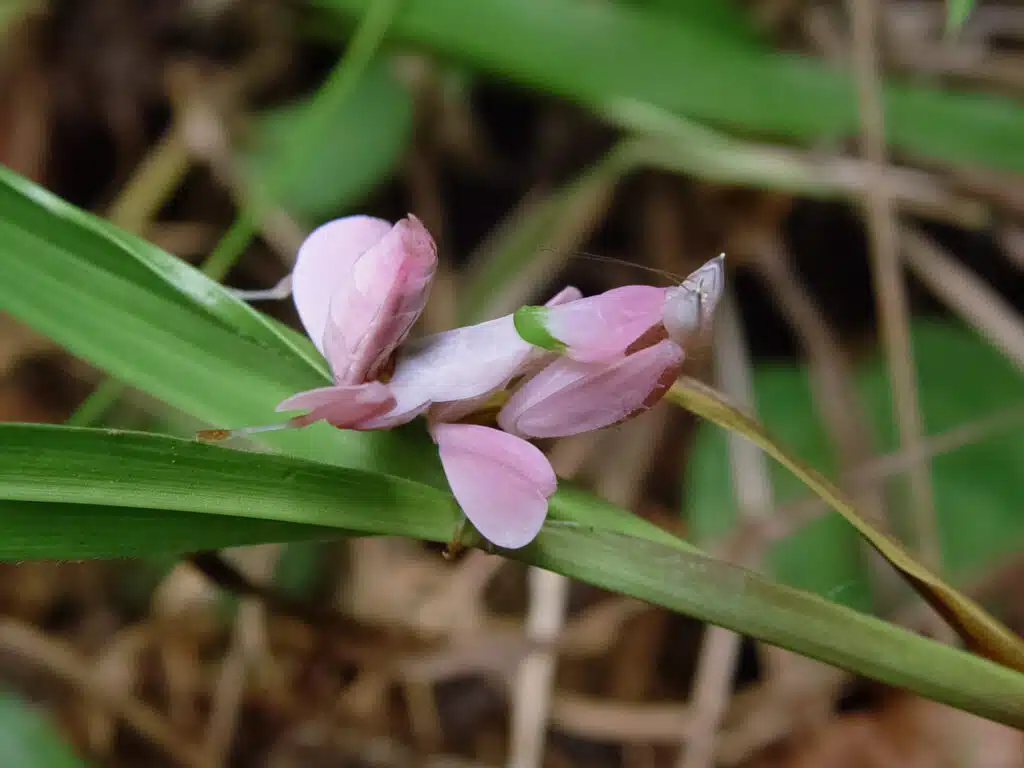
Scientific name: Hymenopus coronatus
Shades of pink: Pink to white
Orchid Mantis represents a type of color-changing bug. The species can adapt its colors between green and pink.
The pink variant of the species is bright or highly faded for most of their bodies. This is a direct mimicry of one of its host species, The Moth Orchid.
This camouflaging color serves to their benefit as Orchid Mantis are carnivorous. They patiently wait for insects and bugs to land on orchids before jumping on them.
Orchid Mantises are native to Asian regions where orchids grow, such as Myanmar.
10. Roseate Skimmer
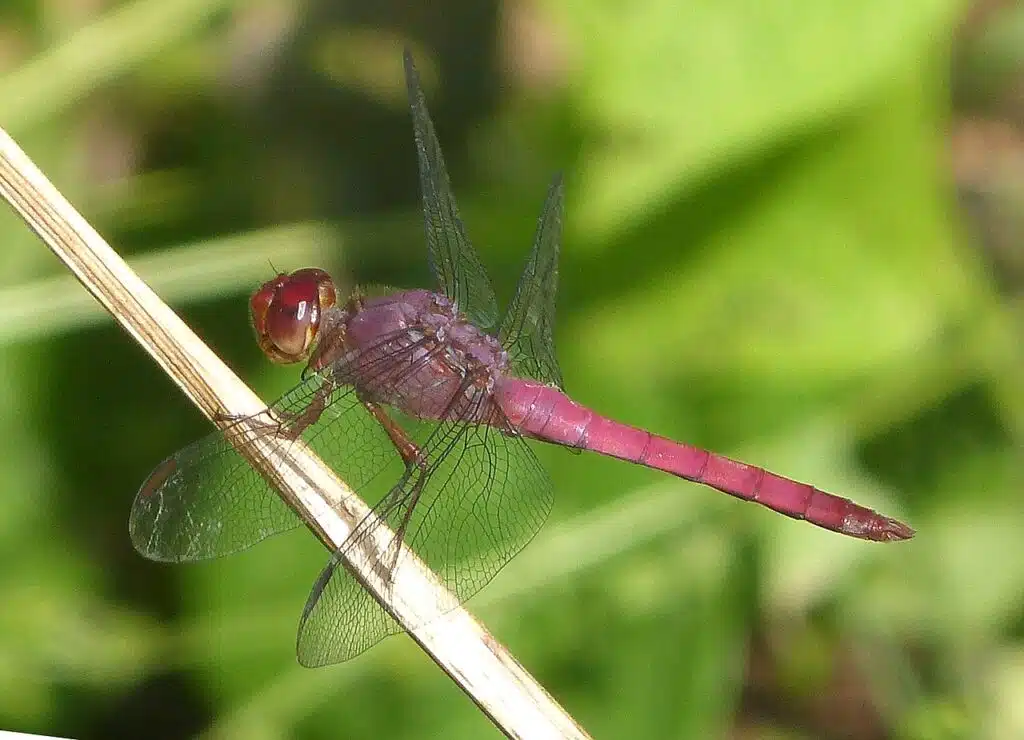
Scientific name: Orthemis ferruginea
Shades of pink: Pink-to-rose
The entire body of the Roseate Skimmer is dominated by rose and dark red colors.
Dragonflies of this species are among the species that live close to water. They prefer vegetated areas close to the water and areas with muddy terrains.
The lower body of the species has a pink color while the head is dominated by dark red nuances.
Roseate Skimmer dragonflies are found both around lakes and ponds as well as around temporary or artificial bodies of water.
11. Violet Dropwing
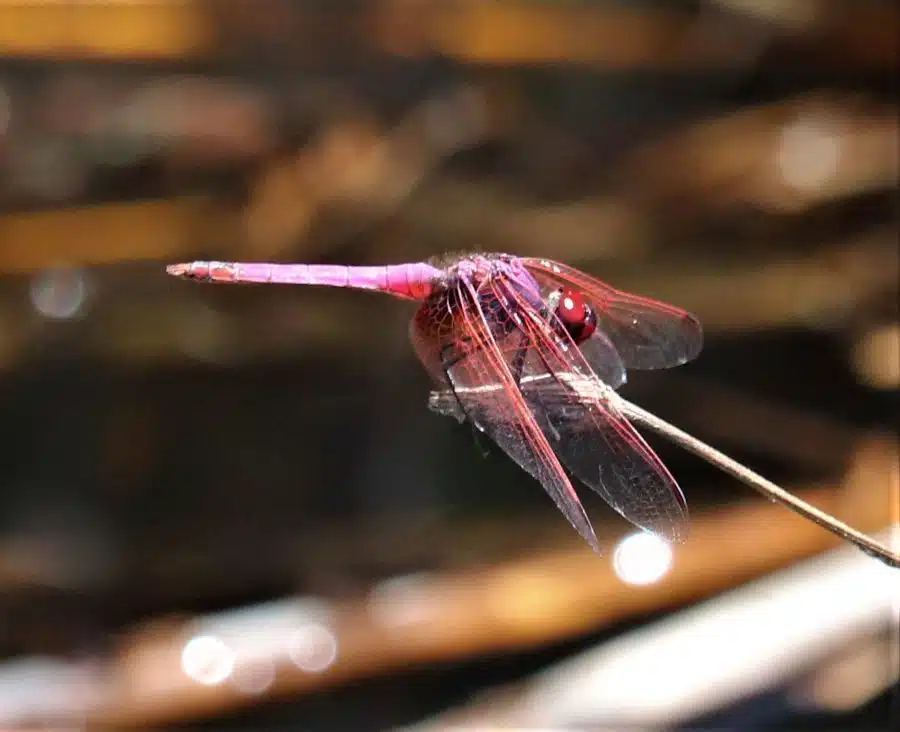
Scientific name: Trithemis annulate
Shades of pink: Pink-violet
Violet Dropwing is found in some of the largest semi-arid climates around the world. This includes areas with at least some moisture in Africa as well as semi-arid regions of Iran, Iraq, and Oman.
Violet Dropwings are also found in Southern European states.
Males of this species are pink while females have yellow-brown bodies.
The male of the species is often characterized by a darker pink nuance, closer to violet.
These types of Libellulidae are known to lower their wings immediately after landing, which inspires their name.
12. Indra Swallowtail Caterpillar
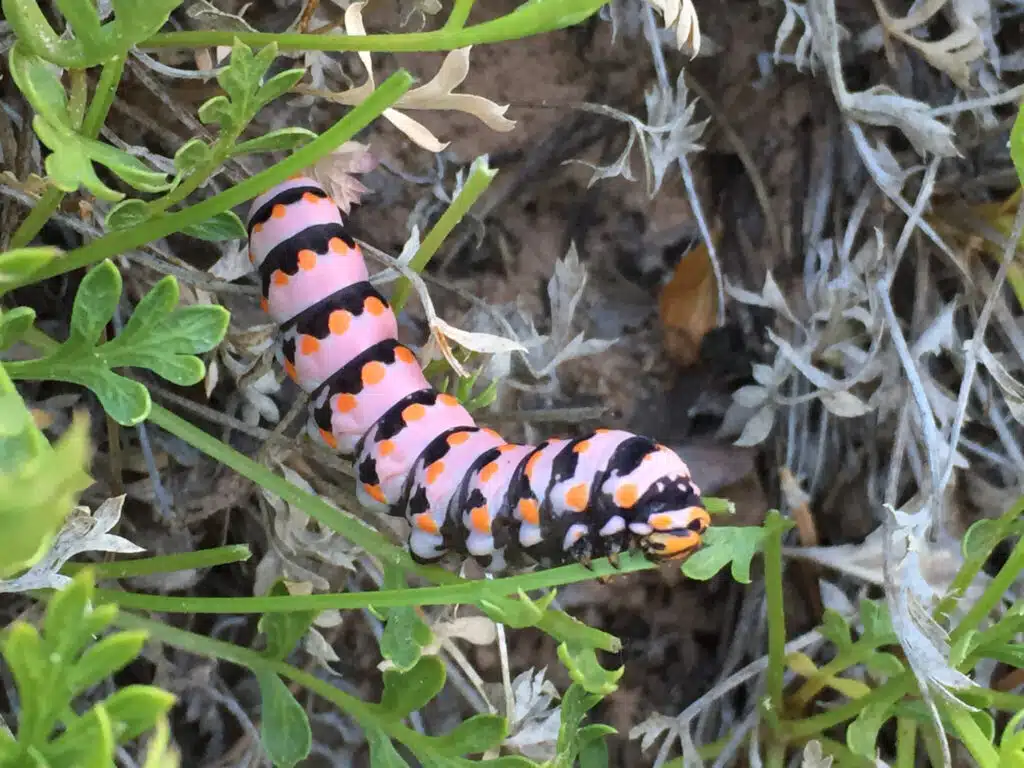
Scientific name: Papilio indra
Shades of pink: Bright pink
Indra Swallowtails are specific to the Western US states and regions around The Rocky Mountains.
These types of caterpillars are initially dark brown to black. They start to grow pale pink bands along their bodies as they grow.
2 small orange or white spots may be seen along the pink bands as well.
Some of the ideal habitats for this caterpillar include mountainous regions of California and Nevada.
13. Silvery Blue Caterpillar
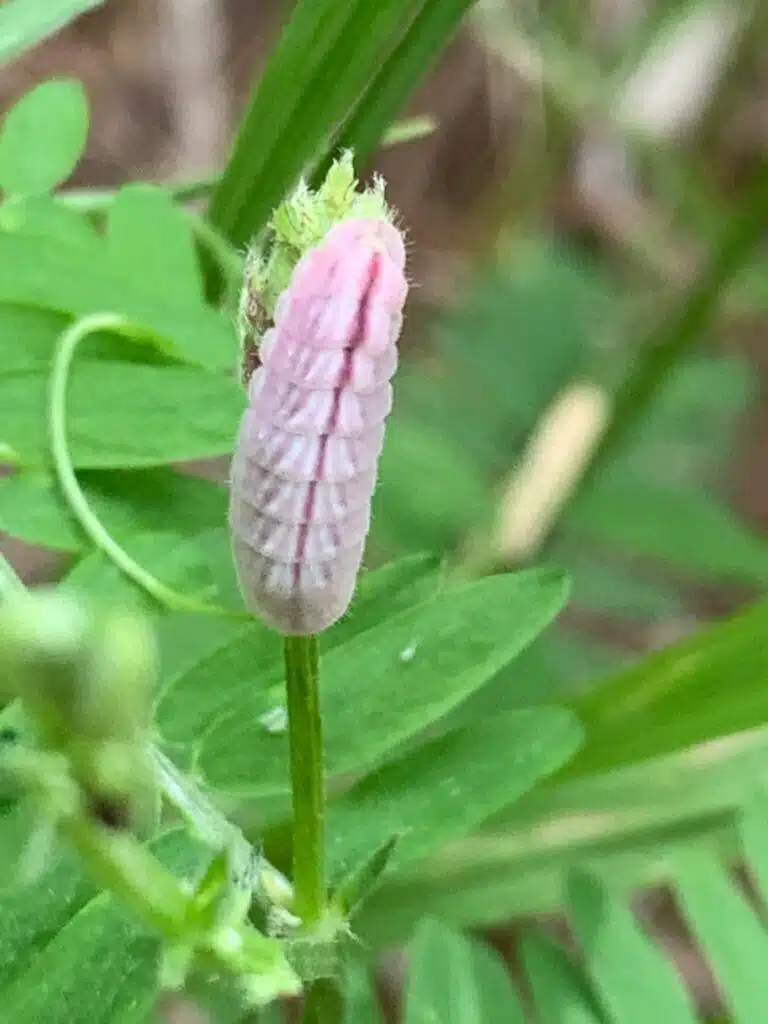
Scientific name: Glaucopsyche lygdamus
Shades of pink: Bright pink
One of the pink caterpillars of Western North America also comes with white marks and stripes. The Silvery Blue Caterpillar has a mostly green body with a brown stripe, but the species can also be pink and white.
Its dorsal nectary organ is all-pink, as is its head. There’s a darker pink mid-dorsal strip on the caterpillar as well.
Seen in the summer, The Silvery Blue Caterpillar has widespread Pacific Coast distribution from Canada down to Baja California.
14. Pink-striped Oakworm
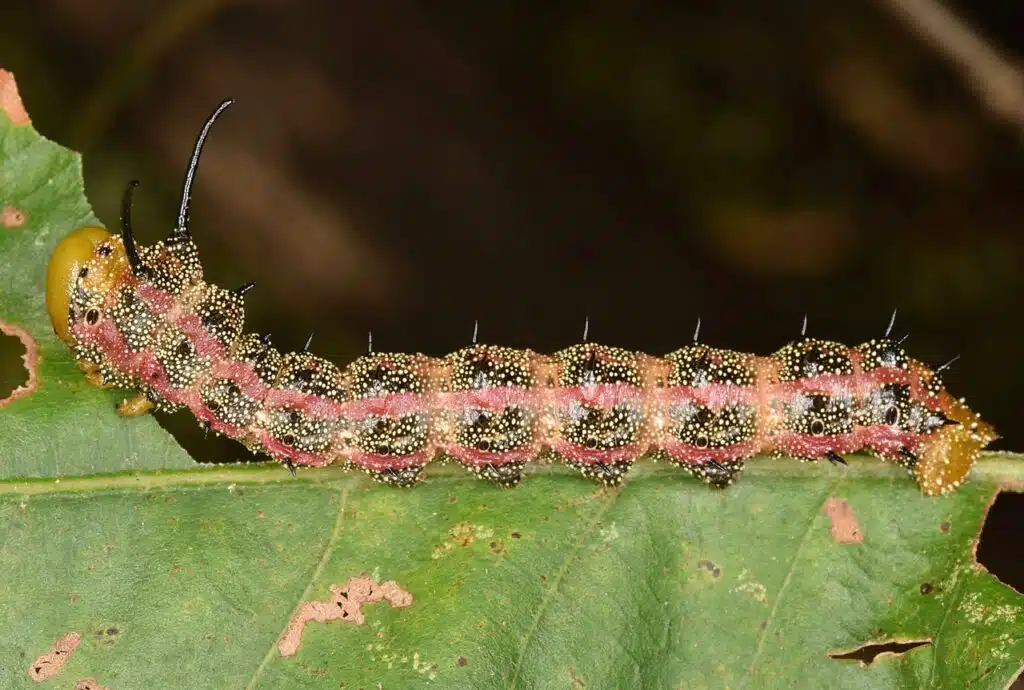
Scientific name: Anisota virginiensis
Shades of pink: Pink-red, pink-purple, pink-ochre
Pink-striped Oakworms represent a species of caterpillars and moths that have at least partial pink or dark pink nuances.
The caterpillar of the species has a green and black body, with pink-red lateral stripes and small white dots across the body.
Once an adult, this moth still maintains some pink nuances, typically mixed with different nuances such as yellow-ochre.
15. Drab Prominent Caterpillar
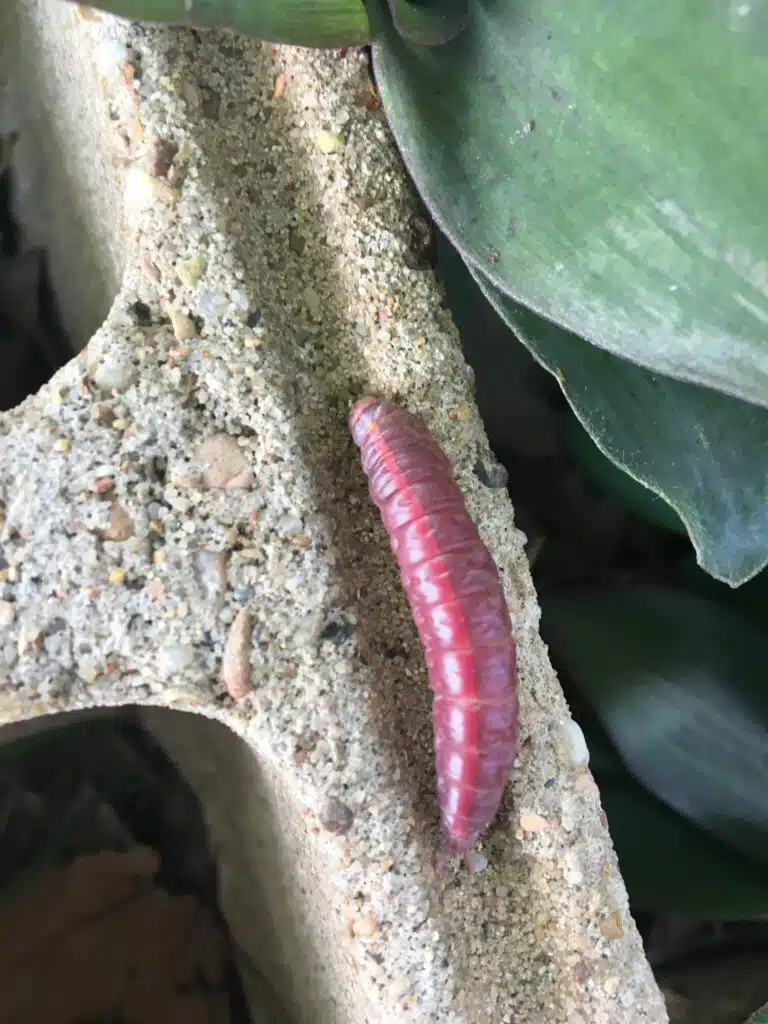
Scientific name: Misogada unicolor
Shades of pink: Pink-purple
The color of The Drab Prominent Caterpillar changes with its growth stage. This is a species that can be green or mostly pink.
Its pink life stage is characterized by a purple nuance and a darker pink mid-dorsal stripe. The entire wide body of this caterpillar has a dark pink nuance.
Even its green stage comes with lateral pink-red spots. This species is only colorful in its caterpillar stage as the adult moth is mostly gray.
16. Rosy Maple Moth
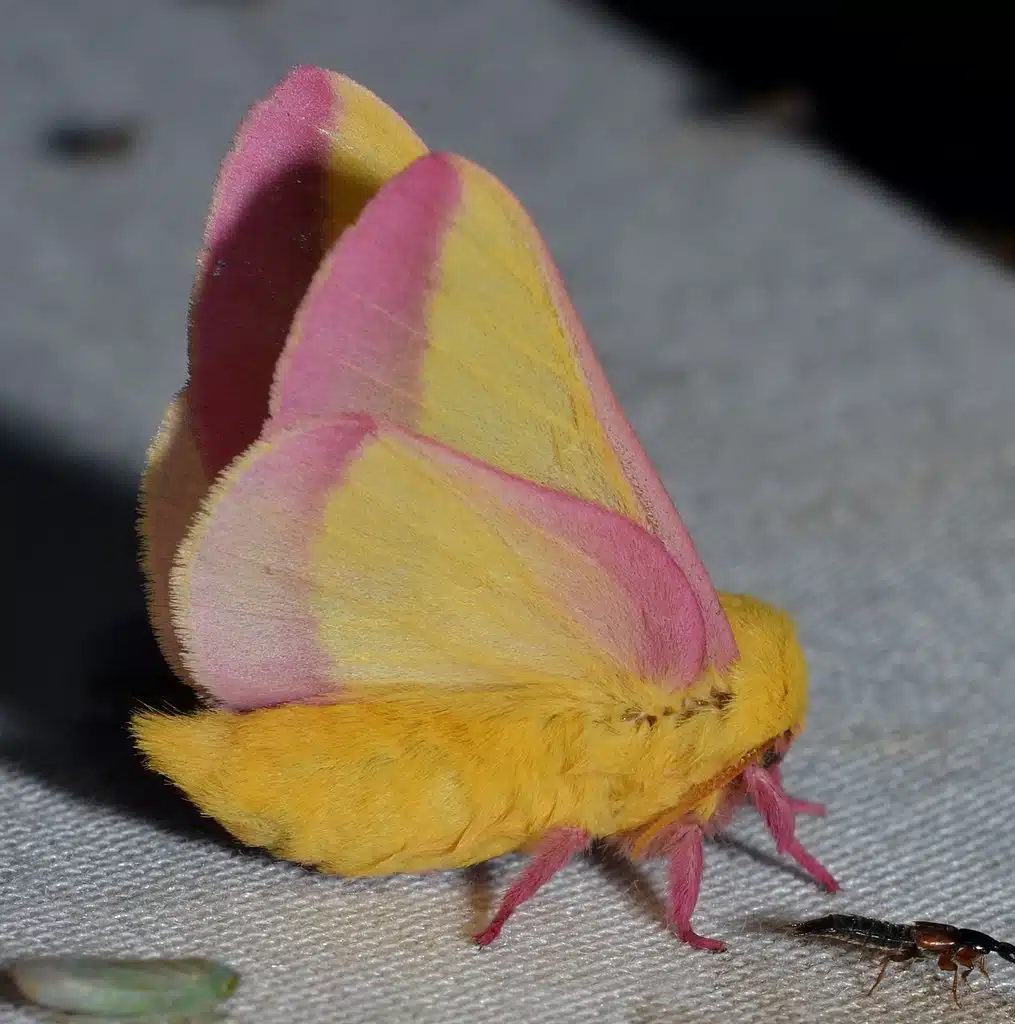
Scientific name: Dryocampa rubicunda
Shades of pink: Pink
Broadleaf trees of North America are sometimes invaded by Rosy Maple Moths. Sugar maple and other species of maple are at risk when it comes to outbreaks of this species.
These moths are mostly known for their partial pink color, paired with bright yellow coloring.
The small and bicolored moth is found along oak woodlands and mixed woodlands. It sometimes moves into suburban areas in gardens with oak trees.
17. Volupial Mint Moth
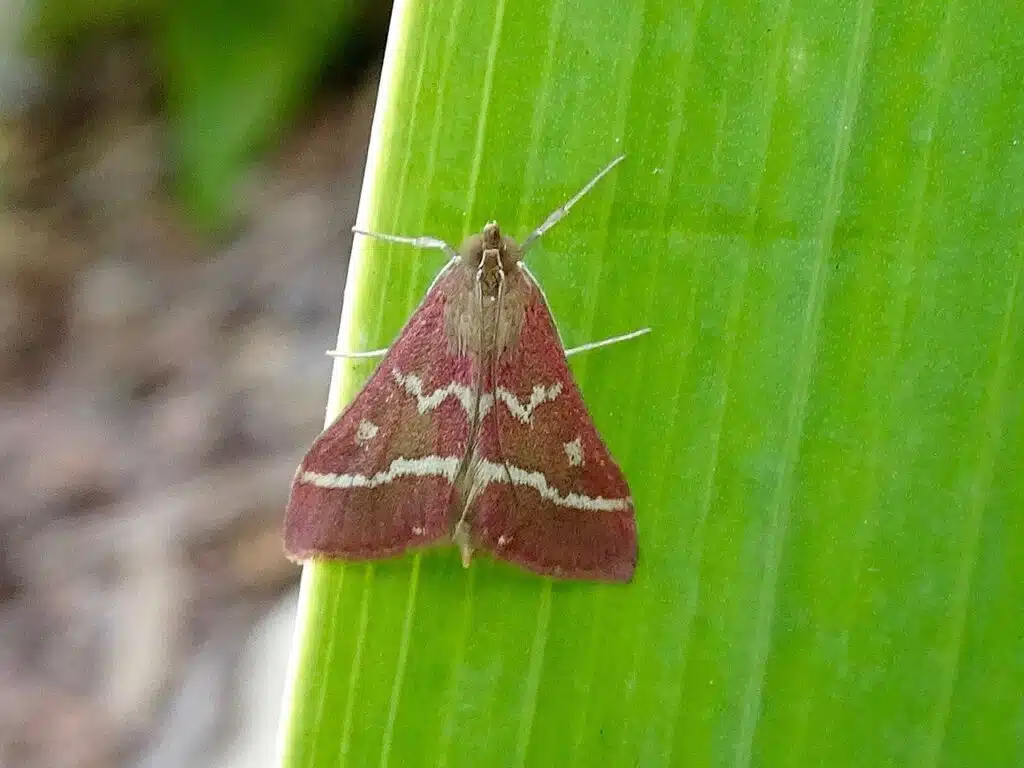
Scientific name: Pyrausta volupialis
Shades of pink: Dark pink
A size of up to 0.5 inches is specific to the Volupial Mint Month, a species dominated by dark pink coloring.
The pink nuance of the species may resemble fading leaves and help the species camouflage itself when resting on leaves.
Southwestern US states are the only North American regions where this species can be seen today, mainly on the various species of mint in these states.
18. Inornate Pyrausta Moth
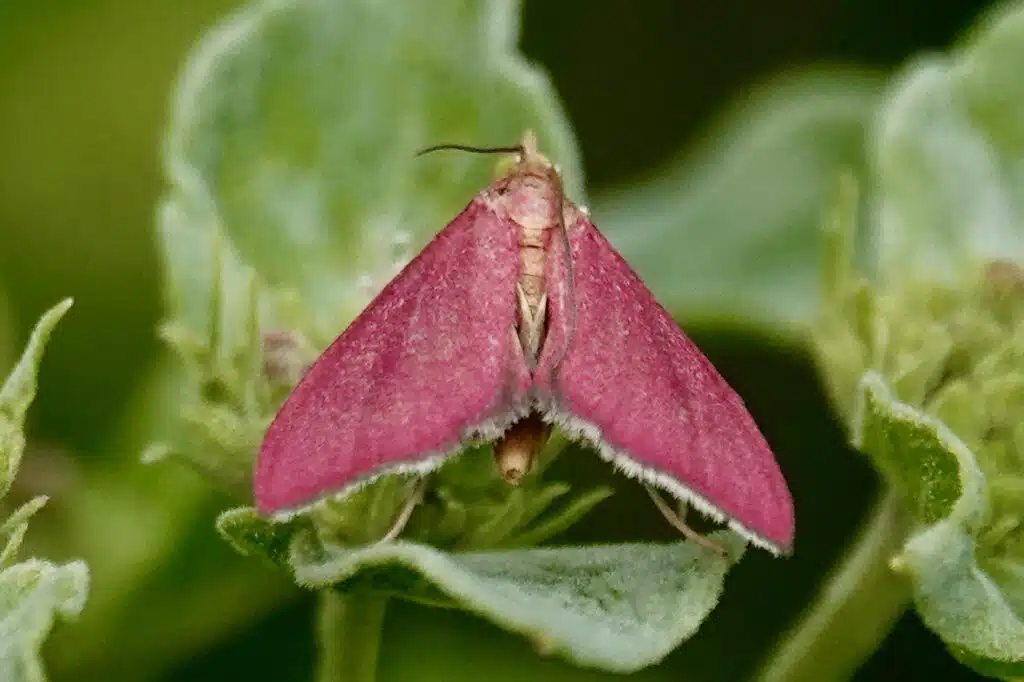
Scientific name: Pyrausta inornatalis
Shades of pink: Dark pink
Inornate Pyrausta Moths are also known as Southern Pink Moths as they live in The Southern US states, from Florida to California.
The adults of the species have dark pink coloring, similar in nuance to The Volupial Mint Moth.
The damaging caterpillar of the species also shows tiny bright pink spots with black margins. These caterpillars are dangerous in gardens as they bore directly into flower buds.
However, its wildflowers such as those in the Salvia family mostly attract the caterpillars of Inornate Pyrausta Moths.
These wildflowers often have pink-violet blooms, which may explain the pink spots on the caterpillar through mimicry.
19. Elephant Hawkmoth
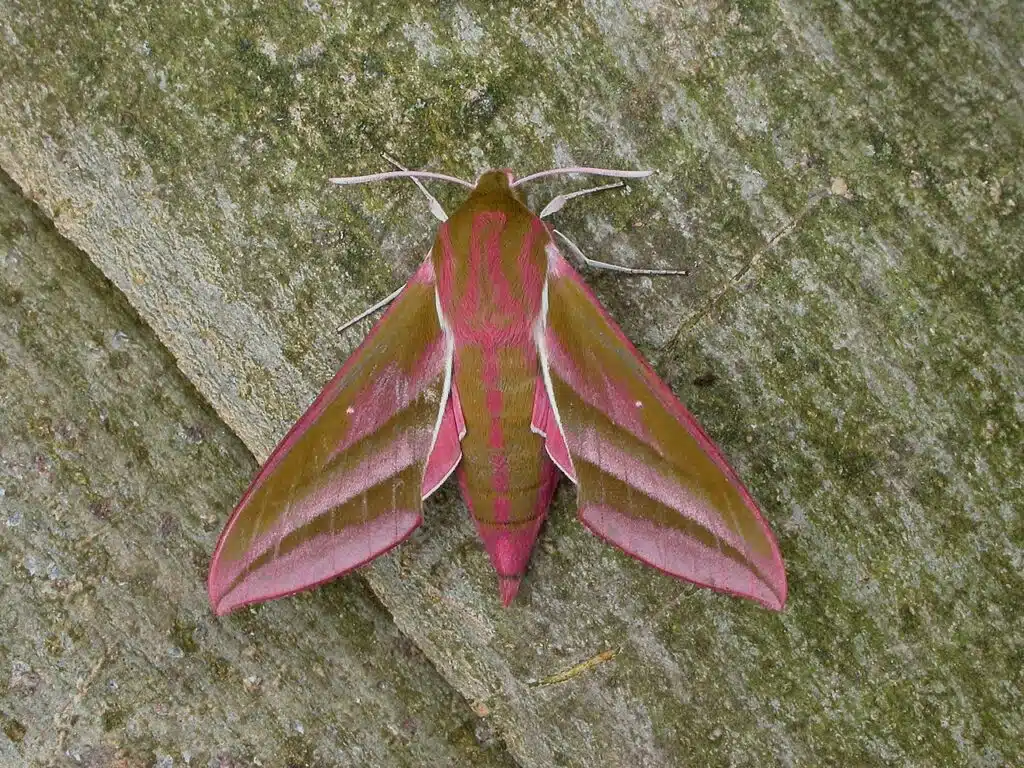
Scientific name: Deilephila elpenor
Shades of pink: Pink and yellow
A known pollinator, Elephant Hawkmoth is a species partially dominated by pink and yellow coloring.
Most of its body is pink while its wings also show pink edges.
Spotting this moth may not be easy due to its nocturnal feeding habits. It comes out at night, hovering around plants feeding on nectar from various flowers such as those of honeysuckle.
The flowers this species feeds on are also often pink and yellow.
20. Western Sheep Moth
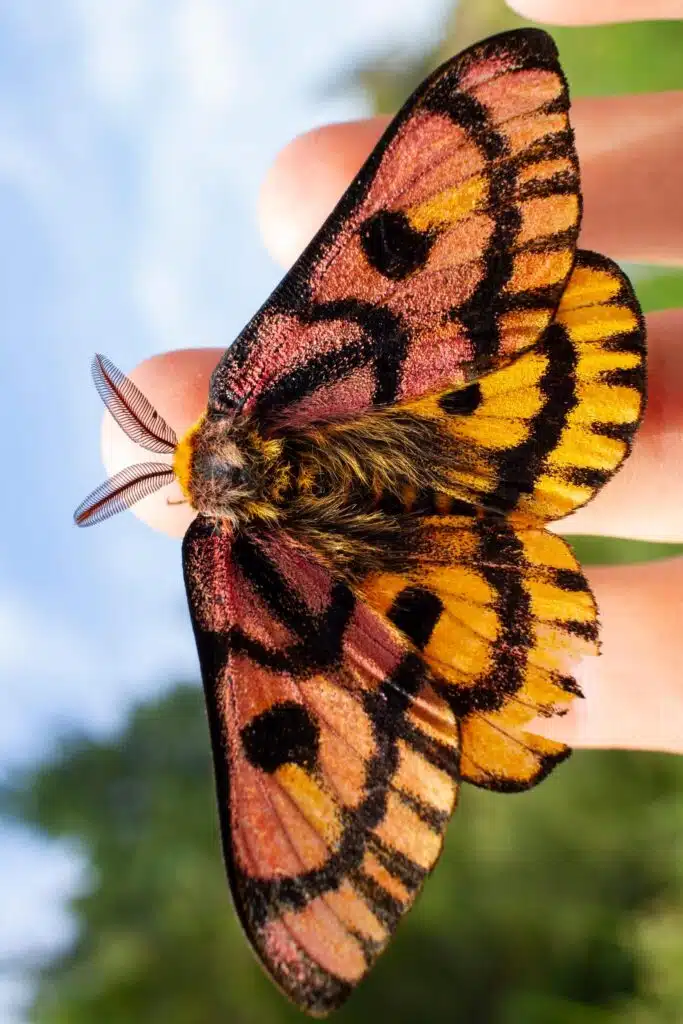
Scientific name: Hemileuca eglanterina
Shades of pink: Pink-purple
High-elevation regions in Western North America are the native range of The Western Sheep Moth, a species native to The United States.
The color of its wings is dominated by pink, with various black patterns.
Its pink nuance can be bright pink or dark pink, closer to purple.
Active from early summer until September, this is a moth species that can feed on multiple leaves such as those of trees or various other shrubs.
Further Reading: